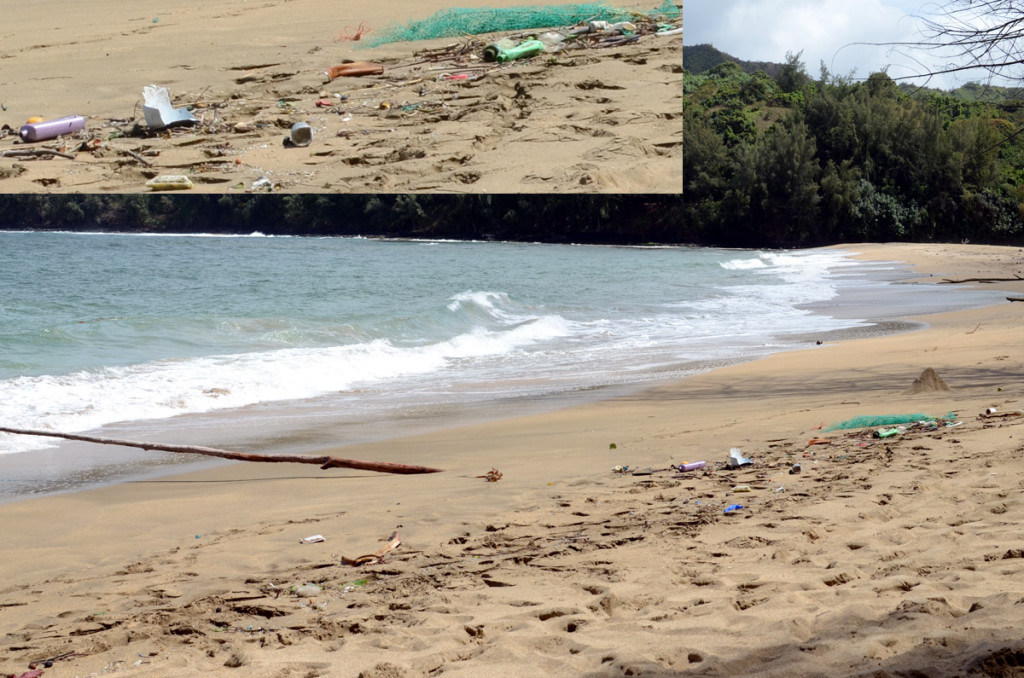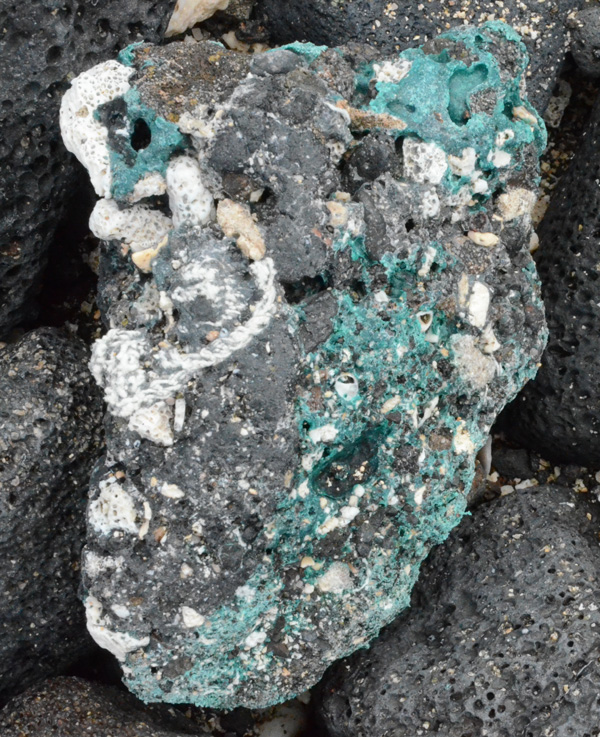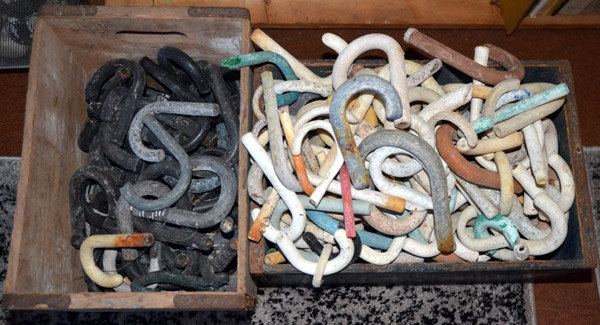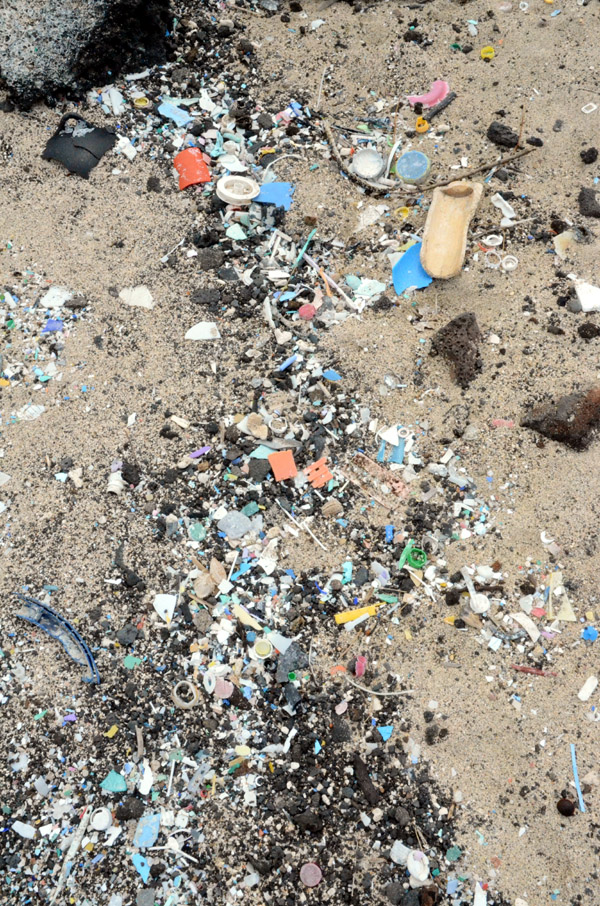Plastic rocks: Large pieces of plastic debris are generally removed from tourist beaches. Other, more remote shores see a build-up of debris that is burned unintentionally by people building campfires, or intentionally by people believing that burning is a safe way to make plastics “disappear”. The plastic melts and mixes with rock fragments, mineral grains, shells, and organic debris to form plastiglomerate(2), a human-made stone that may one day serve as a geologic marker of the age of man (the informal “Anthropocene”).
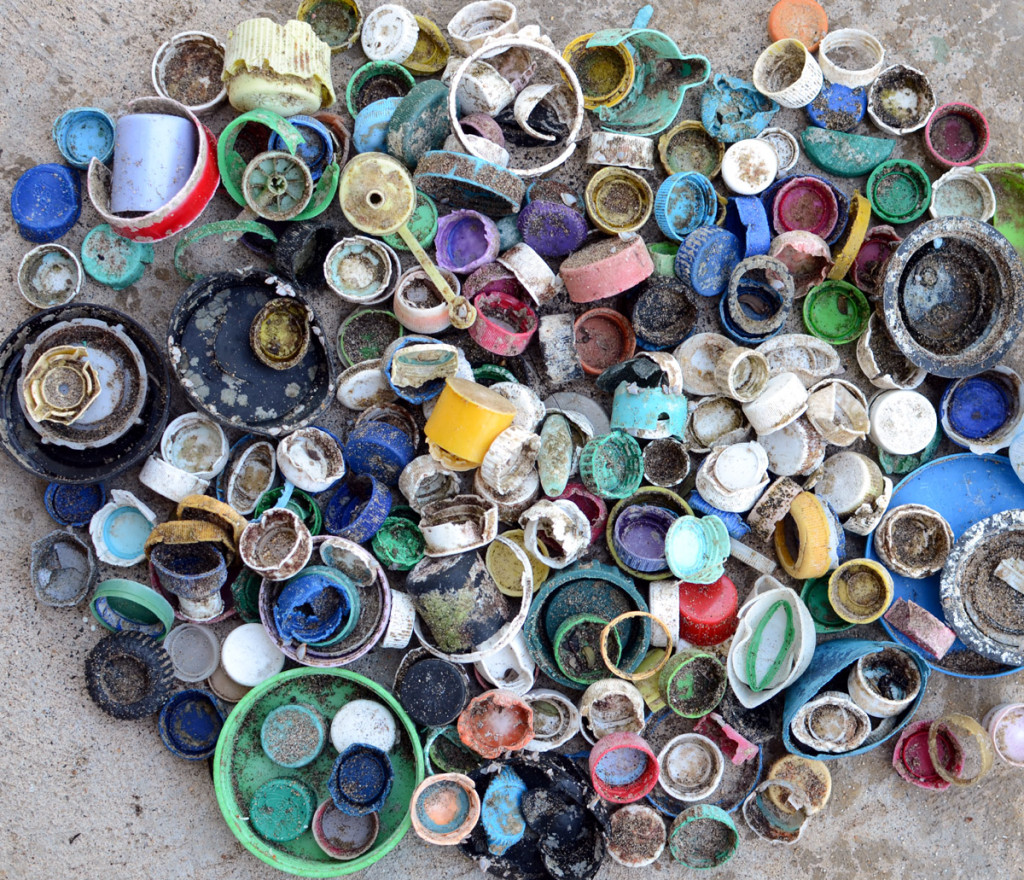
A collection of plastic bottle caps and lids from the high water line of Wainiha Beach, Kauai, Hawaii.
Lids, lids, everywhere you look: There are so many plastic bottle caps and lids in our waters now that it is close to unthinkable. This collection came from a 480m long by 2m wide strip of Wainiha Beach. We even saw abundant plastic debris, including lids and ropes, in the water! Plastic caps have been found in the guts of dead seabirds on Midway Atoll. The grazers see brightly coloured caps at the sea surface and mistake them for food.
Umbrella handles? Who would have thought that there were enough carelessly discarded umbrellas for beachcombers Noni and Ron Sanford to accumulate this many handles on an island in the middle of the Pacific Ocean? For some reason this photo makes me very frightened for our future…
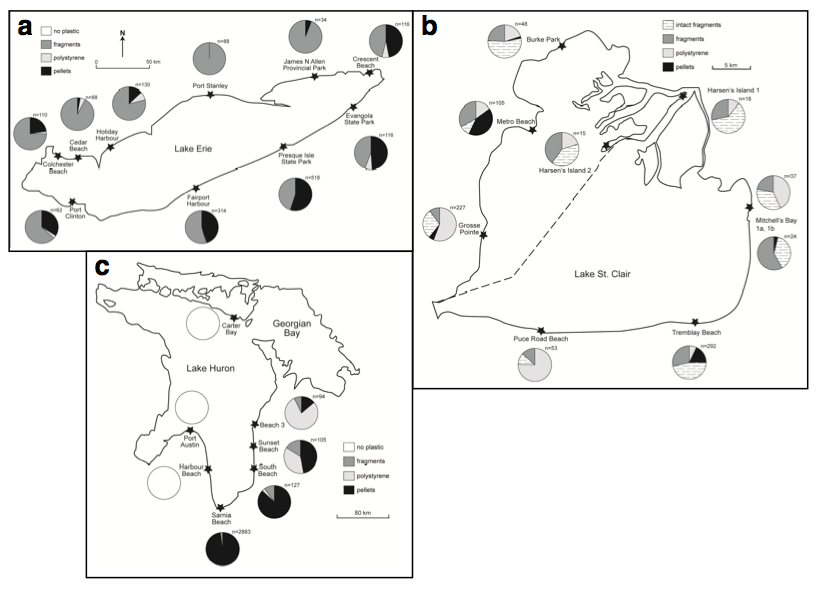
Relative abundances of different types of plastic debris along shorelines of a) Lake Erie, b) Lake St. Clair, and c) Lake Huron. n = number of debris items counted. (From ref. 3)
Not just the oceans – Great Lakes plastic: More and more plastics are being found on lake and river surface waters, along riverbanks and shorelines, and in lake bottom sediments (4). Lakes Erie and Ontario are sinks for the greatest amount of plastics in the Great Lakes, mainly as a result of population density, plastics industries, and terminal location in the Great Lakes chain.
So what to do with this scourge? Reducing the amount of plastic you use will help decrease the demand for production. In addition, stopping the release of plastic at its source will help keep our oceans and lakes clean. As anglers who spend as much of our free time as possible on the water, we can play a leading role here. Reduce, reuse and recycle. When that bag flies off the boat – turn around and get it. On the way out from that trout stream, pack up your trash and pick up a few pieces of someone else’s. When that largemouth splits your Senko or worm in half – put it in the trash, not in the water. Better yet, reuse it on a Ned rig. Put used and discarded line into recycling stations. Participate in river and roadside cleanups. Educate your friends and fellow anglers. Let’s do our part, it’s only our future we’re looking at here.
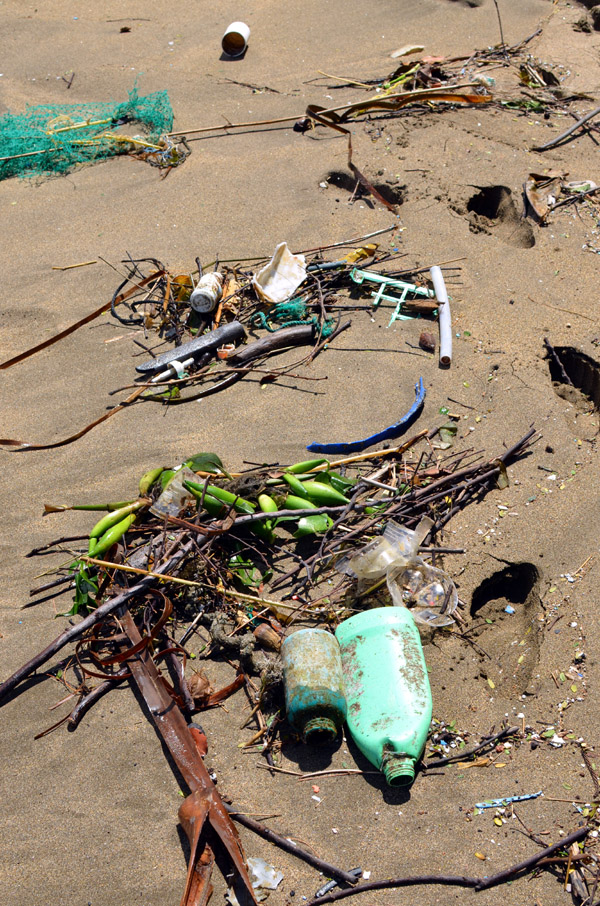
Plastic fragments, both large and small (microplastics), at the high water line (Wainiha Beach, Kauai, Hawaii).
References:
1) P.L. Corcoran, M.C. Biesinger, M. Grifi, Plastics and Beaches: A Degrading Relationship, Marine Pollution Bulletin, 58(1) (2009) 80-84.
2) P.L. Corcoran, C. Moore, K.Jazvac, An anthropogenic marker horizon in the future rock record, GSA TODAY 24 (2014) 4-8.
3) M. Zbyszewski, P.L. Corcoran, A. Hockin, Comparison of the distribution and degradation of plastic debris along shorelines of the Great Lakes, North America, Journal of Great Lakes Research, 40(2) (2014) 288-299.
4) P.L. Corcoran, T. Norris, T. Ceccanese, M.J. Walzak, P.A. Helm, C.H. Marvin, Environmental Pollution, 204 (2015) 17-25.



